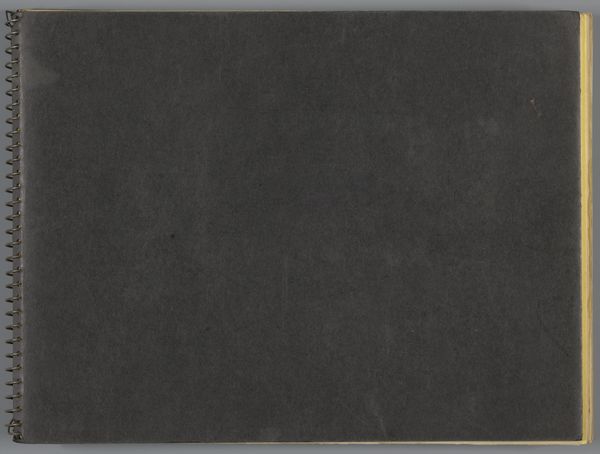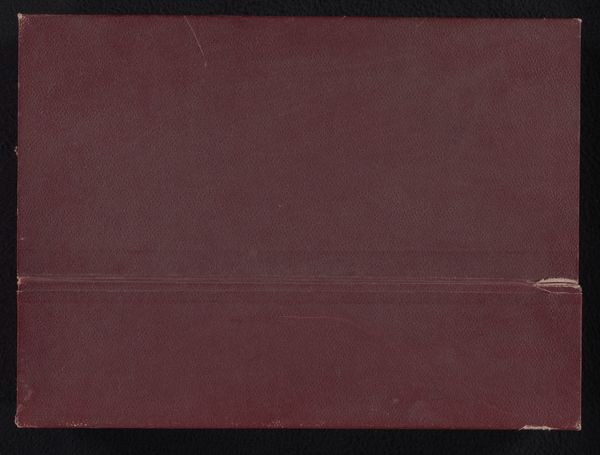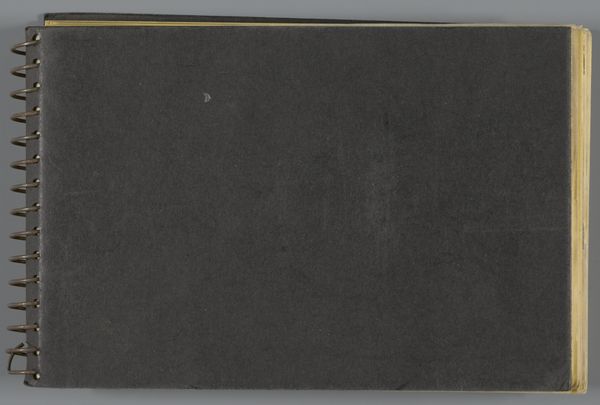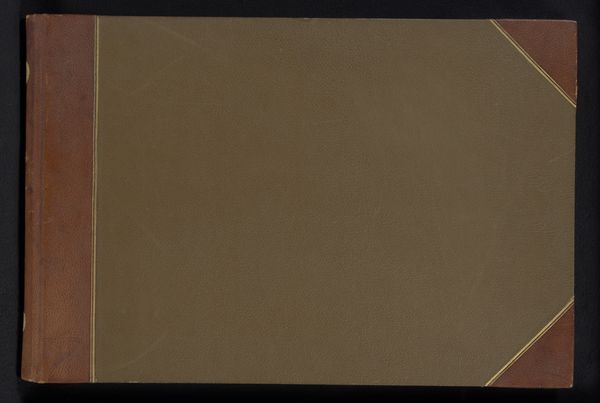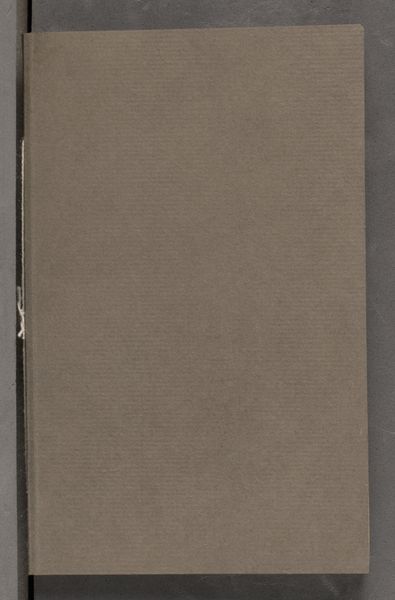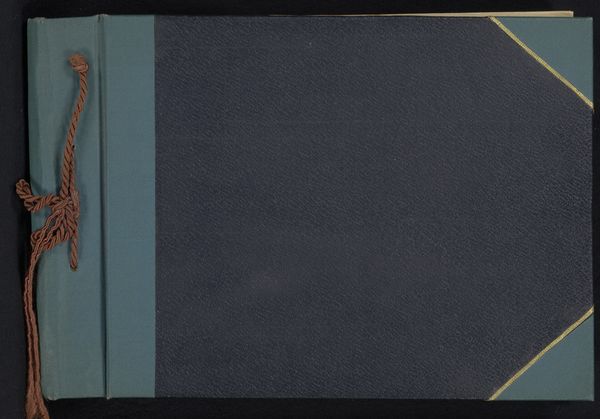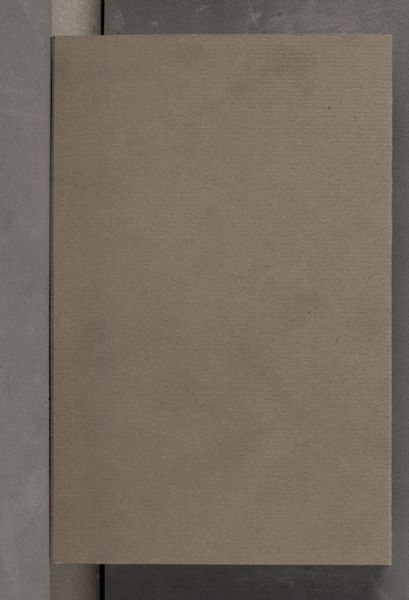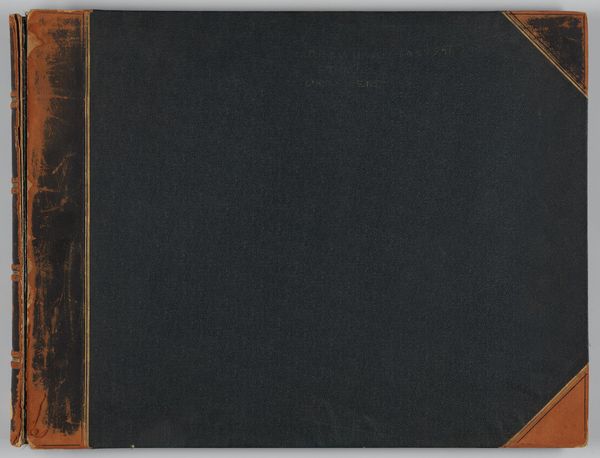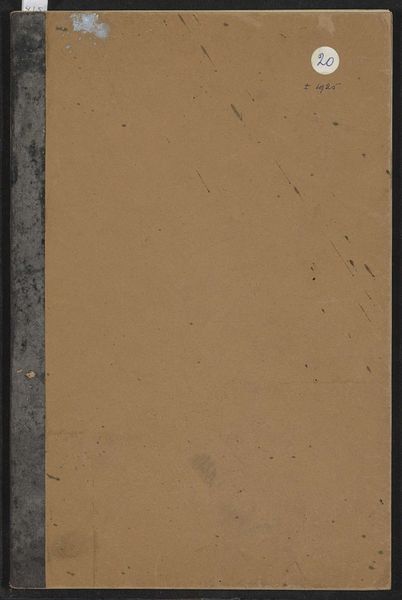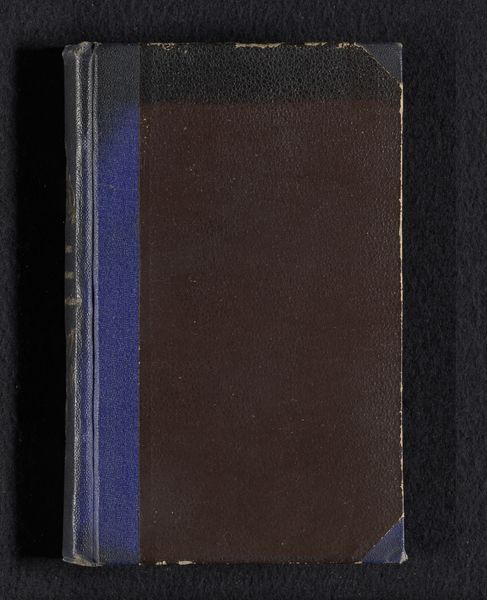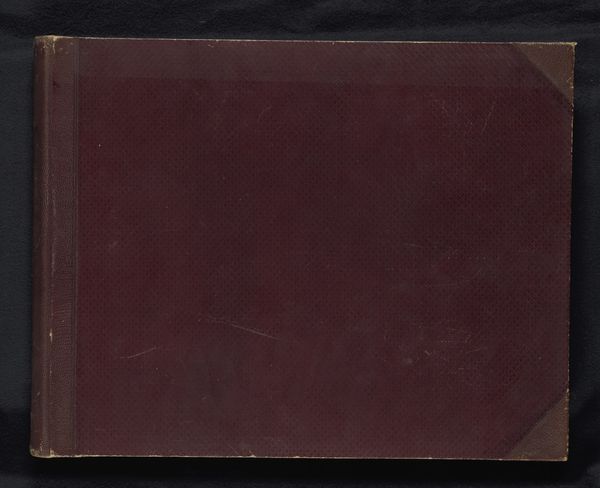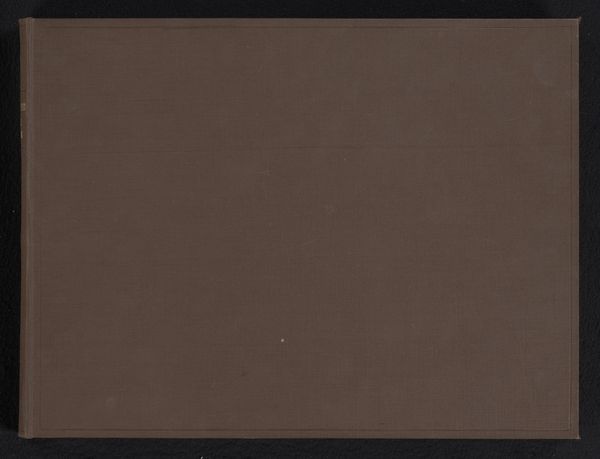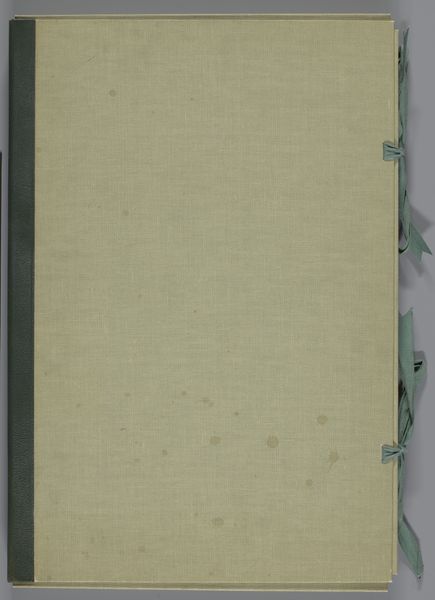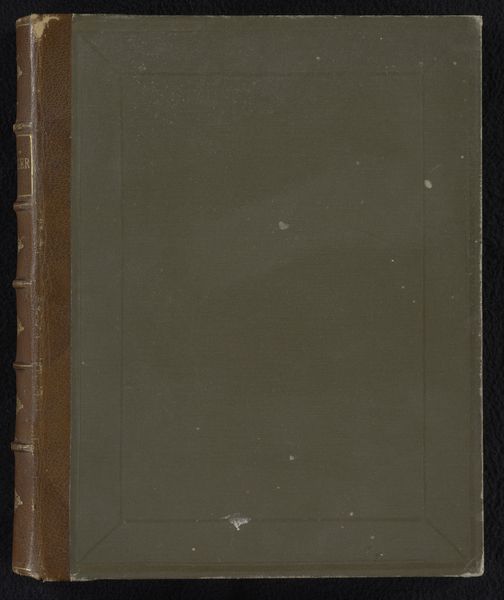
Fotoalbum met 51 topografische foto's en fotoreproducties van kunstwerken uit Italië 1860 - 1890
0:00
0:00
Dimensions: height 337 mm, width 496 mm, thickness 29 mm, width 1001 mm
Copyright: Rijks Museum: Open Domain
Curator: This unassuming album cover contains multitudes, literally. "Fotoalbum met 51 topografische foto's en fotoreproducties van kunstwerken uit Italië" – or, an album with 51 topographic photos and photo reproductions of artworks from Italy. It was created sometime between 1860 and 1890. Editor: My initial impression is one of reserved elegance. The dark aubergine cover, paired with thin gold accents at the spine and corners, offers a simple frame hinting at treasures within. Curator: Indeed! This album is not merely a collection of landscapes. Consider the appropriation inherent in its structure: reproductions of artworks alongside geographical photographs. This suggests an impulse to categorize Italy through both its natural beauty and its artistic legacy. Editor: The format suggests a very controlled gaze, doesn't it? These neatly contained photographs seem less about capturing an authentic reality and more about curating a pre-defined experience of Italy for the viewer. We are engaging with layers of representation – landscape rendered as photographic print, then again arranged and displayed as objects within this larger, bound object. Curator: Absolutely. The selection, likely curated with specific intention, speaks to the symbolic power associated with Italian art and landscapes at the time. Rome, Florence, Venice... each location a signifier of history, power, and the grand tour tradition. Editor: Let's not forget the albumen print itself, contributing to the overall tonal range—soft, muted, almost nostalgic, even at the time it was created. This treatment inherently romanticizes the represented subjects. Curator: Right. And it raises a curious question: Were these albums aimed toward Italian citizens seeking patriotic consolidation of heritage, or for foreign visitors desiring souvenir documentation of their journeys? Possibly both, thereby amplifying a collective memory, not merely documentation of a specific tourist's encounter. Editor: I find myself interested in that liminal space where art, photography, and object-making converge. This album performs not only as a mode of record, but also as a curated artifact with aesthetic considerations of its own, dictating what can and can't be seen. Curator: Ultimately, viewing the album becomes a journey in itself—not just through Italy, but through layers of cultural meaning, artistic interpretation, and collective experience as passed through this album, carrying a cultural memory inside it. Editor: Agreed. And through attention to this careful organization, we can perceive a controlled composition meant to guide, quite literally, an understanding of landscape and artistry as intrinsically bound concepts.
Comments
No comments
Be the first to comment and join the conversation on the ultimate creative platform.
